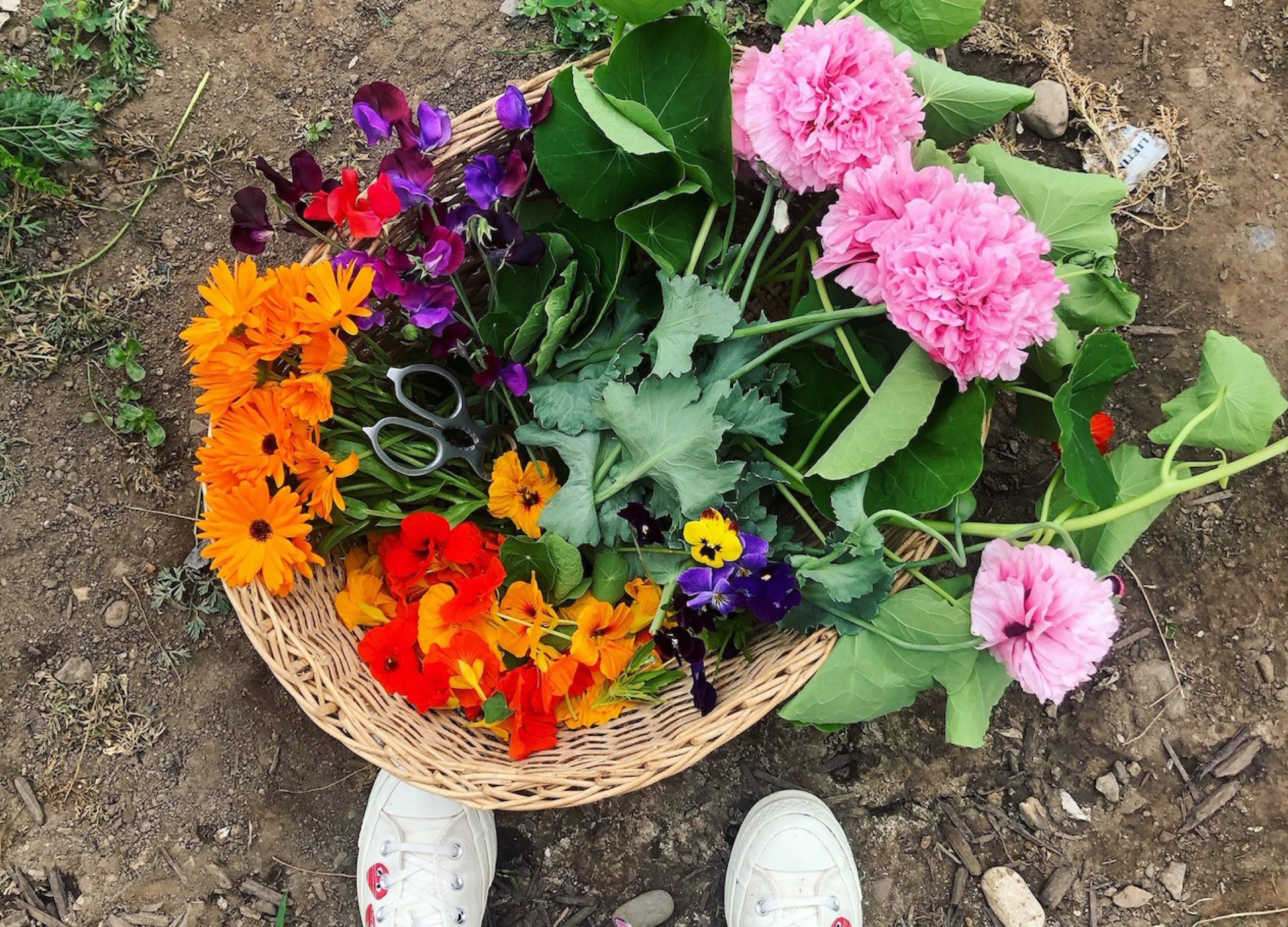
Festive Foraging: A Guide to Edible Botanicals
I am rather obsessed with botanicals. Especially the edible flower kind – and I don’t just mean broccoli and cauliflower florets. Flowers remind me of my grandad. He was so very proud of his garden and to this day the smell of a rose conjures up so many happy memories of my childhood. But it’s not just roses… In the peak of summer whenever I see a honeysuckle creeping along someone’s fence I have to stop, pick one and eat the sweet treat inside.
But where to start as not all pretty things can be eaten. Plus when picking you have to remember to shake out the residents first and never eat a sprayed flower! Here are my top edible flowers to pretty up your cooking this summer.
………………….
words and images REBECCA SULLIVAN
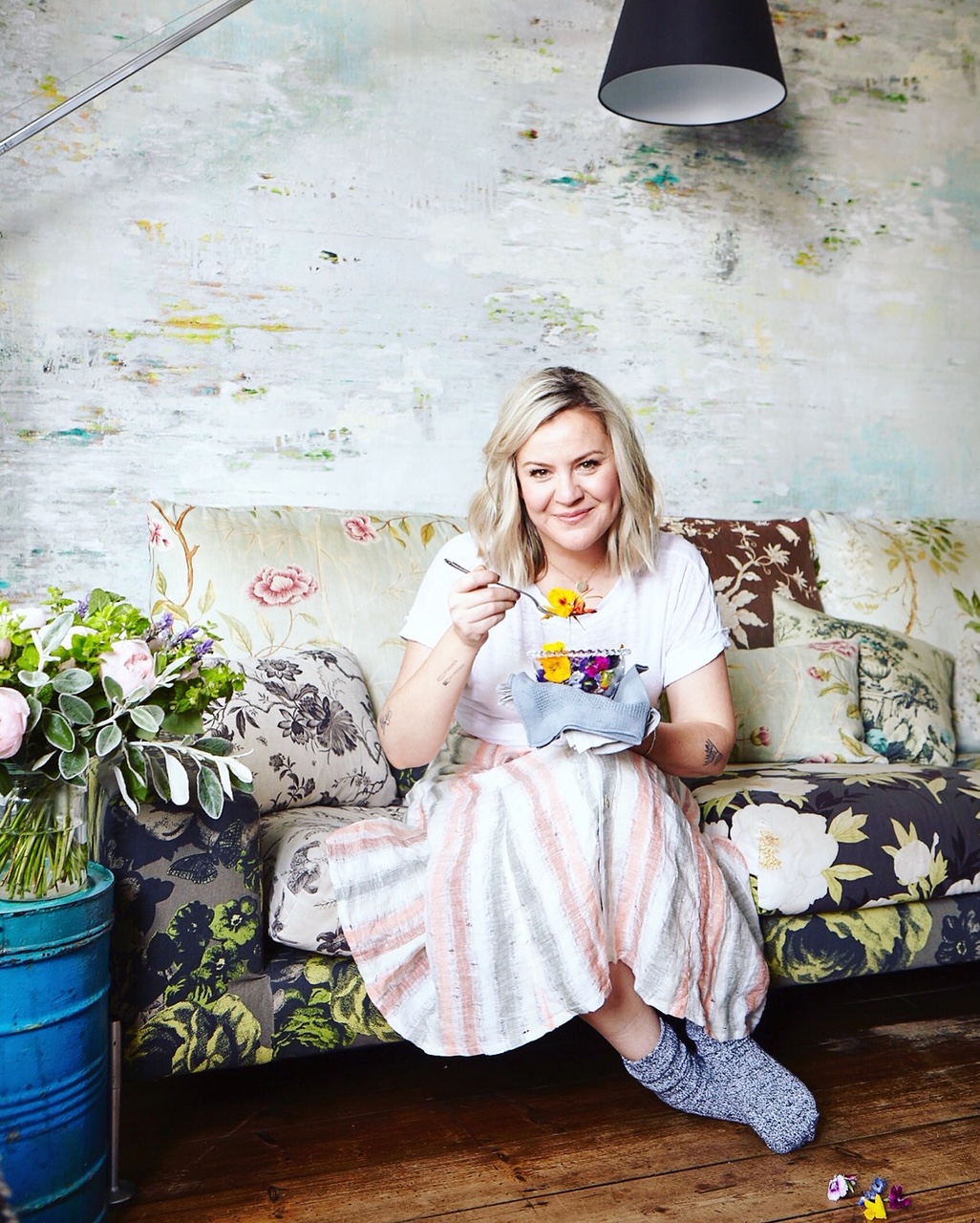
Roses
Fossilisation suggests that the rose is over 35 million years old. And while there are over 150 species, not all are created equal. In terms of eating, it doesn’t have a lot of flavour but the smell can be intoxicating making it perfect for aromatic dishes, such as panna cotta. They are wonderful fresh or dried and have a million uses – sprinkle them on your breakfast or try making a rose lassi. Roses are also famed for their anti-inflammatory properties too, so eat up.
Borage
The bees absolutely love borage and we should love it just as much. Native to the Mediterranean, it tastes almost like a mild oyster crossed with a cucumber and comes in the prettiest shades of blue. Because of its savoury flavour, it’s wonderful in salads and in dishes like poached fish. The leaves, while often snubbed, can also be eaten and are great in salads.
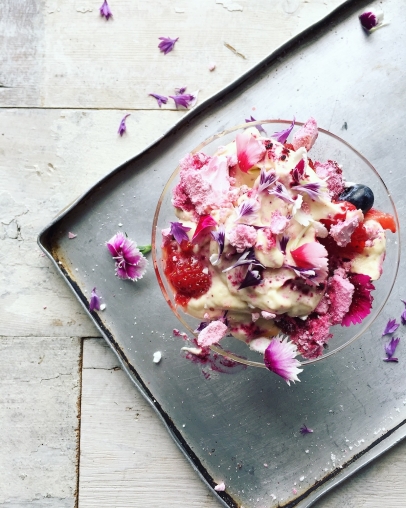
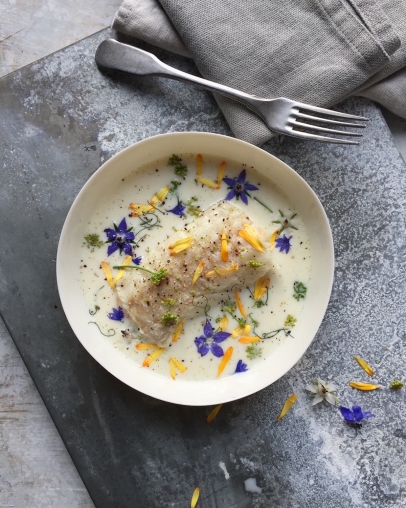
Cornflowers
Cornflowers come in many shades from baby blue to magenta pink. They are one of the easiest flowers to dry and while the petals make a wonderful addition to all kinds of cooking – from baking shortbread to the perfect brew of Earl Grey tea – they also make great dyes. I like to dry the petals out in their colour palette and then blitz them into a fine powder to use in everything from my handmade botanical dyes to eye shadows and food colouring.
Carnations
Carnations are not just the flowers bad dates are made of. Often associated with funerals because of the biblical association, they actually have a slightly peppery taste and miniature ones (dianthus) have a clove-like flavour. In fact, dianthus is one of the ingredients in Chartreuse!
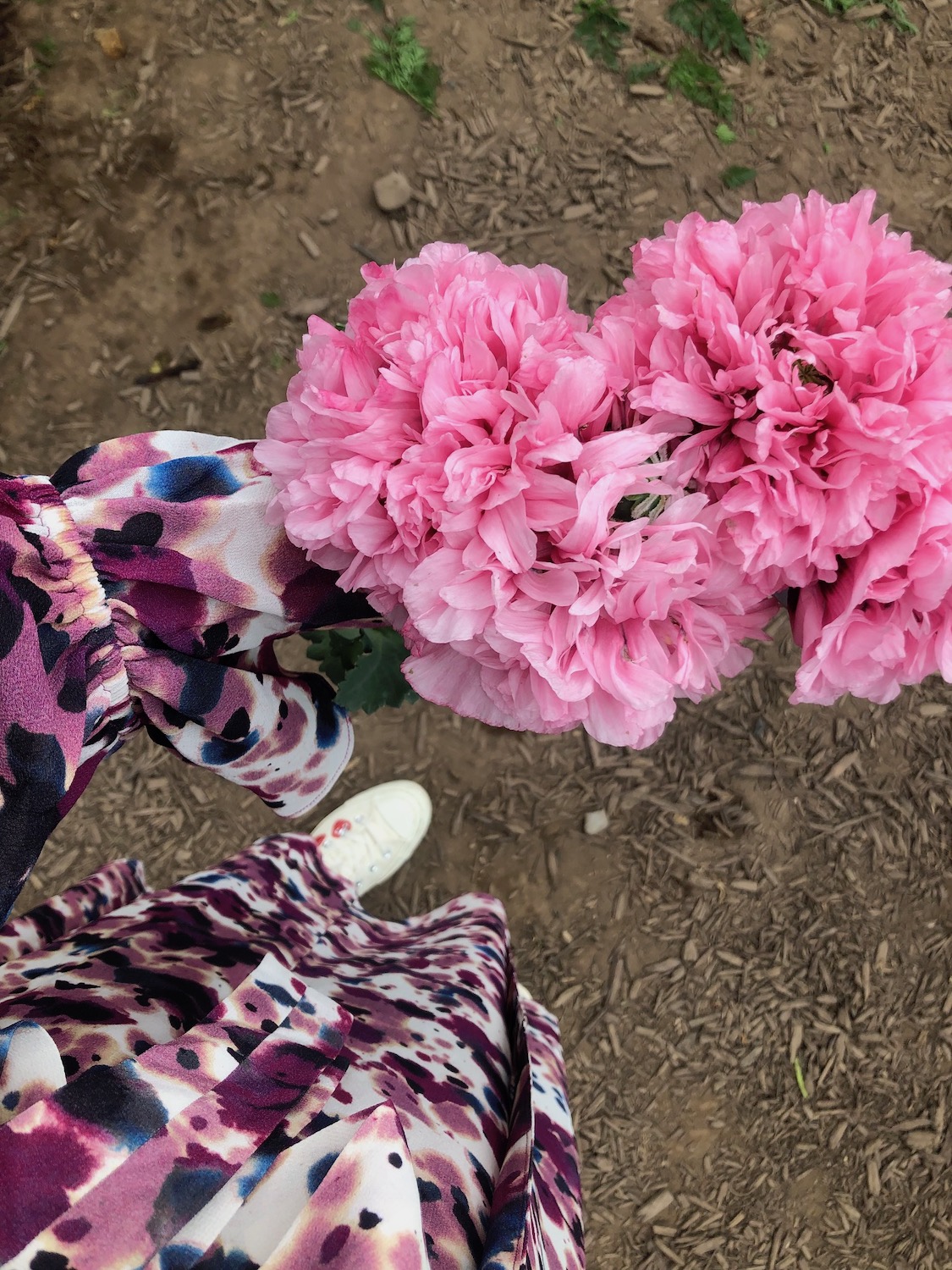
Wood sorrel or sower sob
Yep, I said it… sower sobs. They have the most wonderful tangy flavour and come in more than just fluorescent yellow. You can also find them in bright pink! Often considered nothing more than a weed, or the dog’s favourite urinal, sower sobs have been made ever so trendy by hatted restaurants far and wide because of their foraging capacity. All of the plant is edible from the petals to the citrus stalk. Just make sure to wash it properly first and don’t pick them from the dog park.
Elderflower
While elderflower is prized for its medicinal berries, said to cure everything from a sore throat to hay fever, the flowers can also cause quite the headache by way of a hangover. See, the flowers and berries make such wonderful booze! Place them in a vessel, cover with filtered water and some kind of sugar or honey and leave to ferment. The liquid gold at the end is nothing short of a delight whether you make elderflower cordial, fizz, sherbet, sorbet or candy. The bouquet is stunning too – the tiny cream flowers are perfect for an edible flower arrangement.
Nasturtiums
Nasturtiums are as versatile as it gets and you can eat it all – leaves and flowers alike. The best thing about them though is that the pods are amazing pickled. I like to pickle them in lots of salt and use them in place of capers. They pack a peppery punch and also contain Vitamin C so load up them in your summer salads.
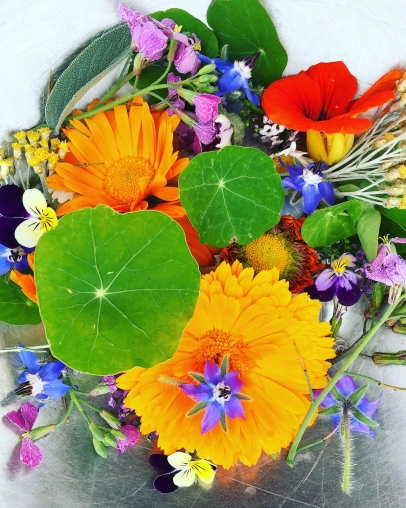
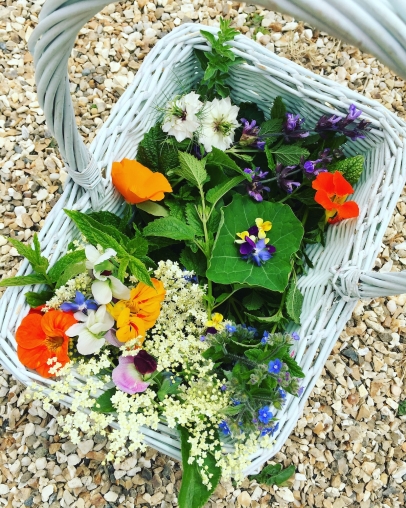
Calendula
Also known as marigold or poor man’s saffron, it is said that calendula is one of the oldest flowers to be cultivated. Bringing not only a pretty scattering of colour on baked treats and savoury dishes, it can also be used as a remedy for period pain and nappy rash. Simply steep a jar full of unsprayed petals in your favourite carrier oil (such as almond, olive or coconut) for a few weeks, strain and use the oil to soothe many ailments.
Bottlebrush
One of my absolute favourite native botanicals, the bottlebrush is more than just a bee’s bestie. During spring, if you look closely at the fine petals on the blushing red beauties, you will notice the nectar. Suck on the flowers and you’ll never not look for it again! I also love to soak the flowers in water and ferment them for a sweet honey drink. Be sure to shake out the critters before you do so though!
Butterfly pea
Butterfly pea provides bright purple flowers that make a pretty blue tea. This legume comes with many health benefits too and is considered a stress and anxiety buster to boot. You can buy the flowers dried for tea or if you live somewhere tropical grow them yourself. It’ll make for quite the conversation starter too – its botanical name is Clitoria Ternatea.


